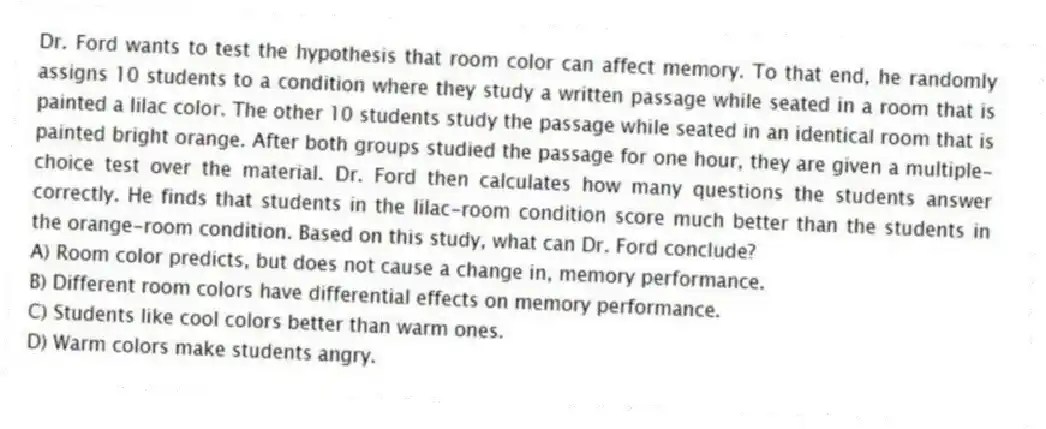
Dr. Ford wants to test the hypothesis that room color can affect memory. To that end, he randomly assigns 10 students to a condition where they study a written passage while seated in a room that is painted a lilac color. The other 10 students study the passage while seated in an identical room that is painted bright orange. After both groups studied the passage for one hour, they are given a multiple-choice test over the material. Dr. Ford then calculates how many questions the students answer correctly. He finds that students in the lilac-room condition score much better than the students in the orange-room condition. Based on this study, what can Dr. Ford conclude?
A) Room color predicts, but does not cause a change in, memory performance.
B) Different room colors have differential effects on memory performance.
C) Students like cool colors better than warm ones.
D) Warm colors make students angry.
Correct Answer:
Verified
Q124: Which statement is TRUE regarding the independent
Q125: In _, neither experimenters nor participants know
Q126: Consider an experiment in which participants watch
Q127: Random assignment is to _ as random
Q128: In a random sample, _.
A) the independent
Q130: If a research study involves the manipulation
Q131: Dr. Ford wants to test the hypothesis
Q132: The independent variable is to the dependent
Q133: The fact that many psychological studies are
Q134: The dependent variable _.
A) is the variable
Unlock this Answer For Free Now!
View this answer and more for free by performing one of the following actions

Scan the QR code to install the App and get 2 free unlocks

Unlock quizzes for free by uploading documents